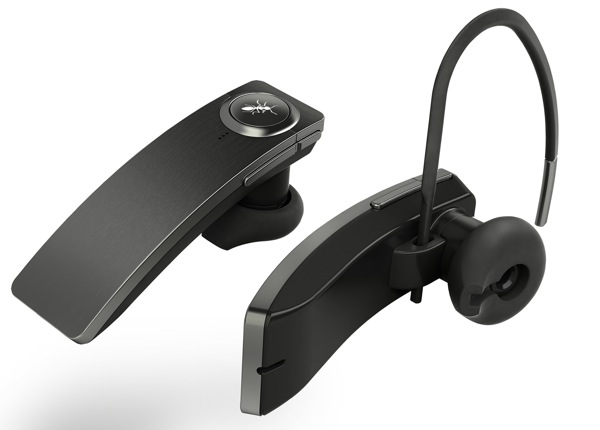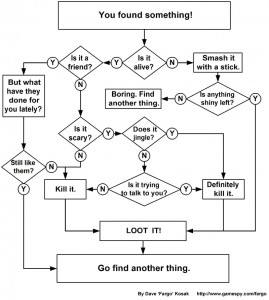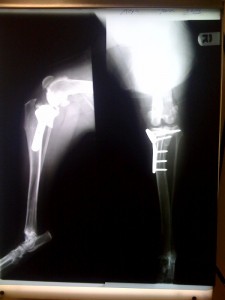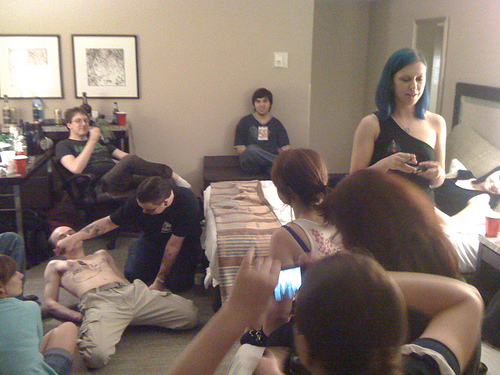 This year for Christmas, my girlfriend got me a BlueAnt Q1 bluetooth headset. Â Yes, I know… all girlfriends should be that awesome. Â I’ve owned the BlueAnt Z9 in the past, and I liked its performance a lot, though I wasn’t too fond of its look. Â Well, that same military grade noise-cancellation technology (or “voice isolation” technology as BlueAnt calls it) is present in this model, plus the voice-activated commands of their V1 headset, except in an attractive package. Â Actually, it looks a lot like the Jawbone, which I’ve also owned. Â I like this a lot better though.
This year for Christmas, my girlfriend got me a BlueAnt Q1 bluetooth headset. Â Yes, I know… all girlfriends should be that awesome. Â I’ve owned the BlueAnt Z9 in the past, and I liked its performance a lot, though I wasn’t too fond of its look. Â Well, that same military grade noise-cancellation technology (or “voice isolation” technology as BlueAnt calls it) is present in this model, plus the voice-activated commands of their V1 headset, except in an attractive package. Â Actually, it looks a lot like the Jawbone, which I’ve also owned. Â I like this a lot better though.
I’ve only had it for a couple of days, but so far I give it an 9/10. Â The only bad things I’ve noticed about it are minor annoyances, and some might even be fixed in the latest firmware (which I can’t upgrade to; see The Bad). Â In a nutshell:
The Good
- Good audio quality, both outgoing and incoming.
- Comfortable fit.
- Noise cancellation works rather well (though I need to do some more testing). Update (Jan 1st, 2010): After further testing (windy conditions, radio blaring), same conclusion — works very well, though not perfectly of course.
- Comes (semi-)pre-charged, so that you can plug it in and go immediately upon opening the box.
- Voice commands work well (haven’t tested trying them in windy/noisy environments yet though). Â Update (Jan 1st, 2010): Tried the voice commands with loud background noise going on, still works fine.
- The firmware is upgradeable, so as they fix things and come out with new features, you can get those.
- There is caller ID, or as good as it can get on a headset — it tells you which number is calling.
The Bad
- The firmware updating software isn’t yet compatible with 64-bit flavors of Windows.
- After going out of Bluetooth range for more than a few seconds, it won’t automatically re-connect when you’re back in range (you have to restart the phone).
- Whenever any audio stream cuts off, it says “call disconnected.” Â This also happens when, for instance, you’re listening to a voice mail, and the voice mail ends.
- Setting up speed-dial numbers requires that you receive a call from the number you want to add.
- Charges via proprietary connector, instead of mini-USB.
These are only the things that stand out. Â Its battery life is about average. Â It paired up with my iPhone 3G with no problem (actually it didn’t even require the “0000” password like older Bluetooth units do). Its weight feels about the same as a Jawbone, packaging was similar to that of a Jawbone. Â Basically, it seems like they took the Jawbone, tweaked it a bit, and used their own noise cancelling technology. Â Which is fine by me.
Voice Isolation Technology
This is really one of the two headliners for this unit. Â The BlueAnt headsets boast background noise cancellation technology as good as that of the Jawbone. Â It actually works better for me. Â The Jawbone uses an induction technology — basically, it has a little nub that sits on your cheek and senses the vibrations. Â However, it doesn’t have a good fit and I have a somewhat thin face, so it never rested on my cheek… which meant that unless I used one hand to hold it there, it wouldn’t pick up my voice and I was effectively on mute.
The Q1 uses a different strategy. Â It has 2 microphones, one facing your mouth and the other facing outward. Â I’m not 100% sure of the details, but my engineering mind imagines it works thusly. Â First, it boosts noises that are significantly louder on the primary microphone (that faces your mouth) than the outward-facing one. Â Second, it filters out frequencies that are outside of the human vocal range. Â Third, it precisely times the difference between when a sound reaches the two microphones. Â Using this time difference, it can tell the general direction of where the sound came from, and can therefore filter out sounds that don’t come from the direction of your mouth.
With a previous BlueAnt (the Z9), I was once in O’Hare airport talking to a friend, trying to coordinate transportation. Â She said that she couldn’t hear me because of the background noise, and I realize I’d forgotten to turn on the voice isolation. Â So I turned it on, and her response was, “Wow. Â It sounds like you just walked into a quiet room.” Â I’ve also tested while walking by a construction worker using a loud saw, in traffic, etc. Â This technology does what it says.
Below is a test I ran by calling my own voicemail. Â With the voice isolation on max, I did still notice a bit of background noise from the music vocals, probably from the speaker that was right in front of my face, but the unit still did a very admirable job.
[display_podcast]
Yes, I am playing the Numa Numa song in that test.
 Voice Recognition
Voice Recognition
This is the main shtick of this headset. When you first turn it on, it walks you through some instructions telling you how to pair it up, and how to use it.  You really never do need to even look at the instruction book.  When someone calls you, you can say “answer” to answer it, or “ignore” to ignore it.  (You can also do this via the headset’s buttons as a failsafe.)
Before giving any voice command, press the multifunction button once and it will prompt you for a command. Â If you want to go into pairing mode, say “pairing mode.” Â If you want to dial the 4th number in your phone’s speed-dial, say “speed dial 4.” If you want to check the battery, Â say “check battery” and it’ll tell you the status (high/medium/low) of the headset, and of the phone. Â And whenever you give an instruction, it confirms which instruction you gave it, which is nice.
And if you’re not sure what you can say, just ask, “What can I say?” and it will tell you.
All of the voice commands have worked spectacularly for me, with a few caveats. Â First, I haven’t tried them in noisy or windy environments. Â Second, you do have to remember the voice commands, or it will misinterpret you. Â If you say “battery status” instead of “check battery,” no telling which command it’ll do. Â Actually, for me that makes it activate the phone’s in-built voice commands (of which the iPhone 3G has none).
Other Stuff
The overall design of this unit is nice. Â The multi-function button depresses easily but with a nice click letting you know you’ve pressed it. Â The volume buttons are easy to feel by touch and press, and you get auditory feedback as to which way you’ve turned the volume. Â It comes with a variety of ear buds and an optional ear hook, so you can customize your fit. Â You can pair it with multiple phones simultaneously, so if you have one work phone and one personal phone you can answer calls from either on it.
Conclusion
I recommend this headset for anyone who needs good background noise cancellation, and anyone who doesn’t like having to remember what pressing a button for 3 seconds vs. 6 seconds does. Â If you just need a basic headset though, I recommend getting something cheaper — I’ve always had good luck with the Plantronics Voyager series, myself.

 Here I splurged a bit. Â DirectX 11 card, again looking to the future. Â I could have gotten two lesser cards for slightly cheaper, and just as good of performance, but that would be noisier, take more power, and not leave room for future upgrades without replacing both cards. This way if I want more power, I add another 8580 (which by that time will have gone down in price significantly).
Here I splurged a bit. Â DirectX 11 card, again looking to the future. Â I could have gotten two lesser cards for slightly cheaper, and just as good of performance, but that would be noisier, take more power, and not leave room for future upgrades without replacing both cards. This way if I want more power, I add another 8580 (which by that time will have gone down in price significantly).








